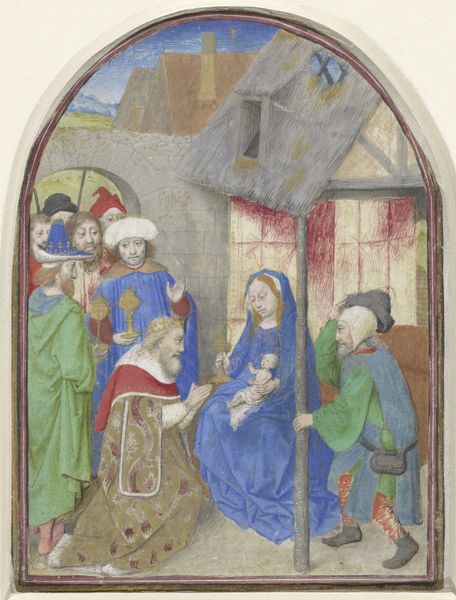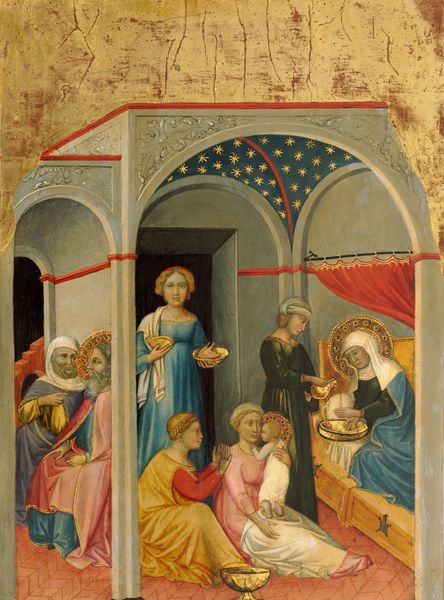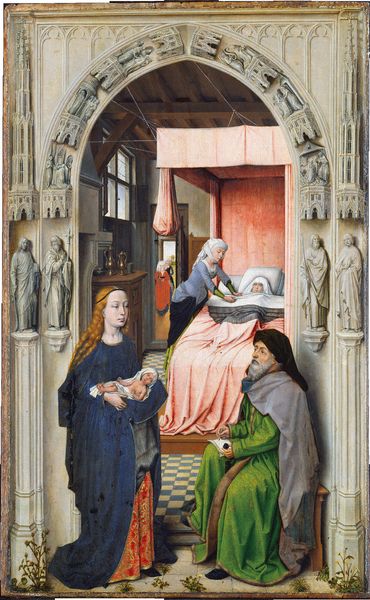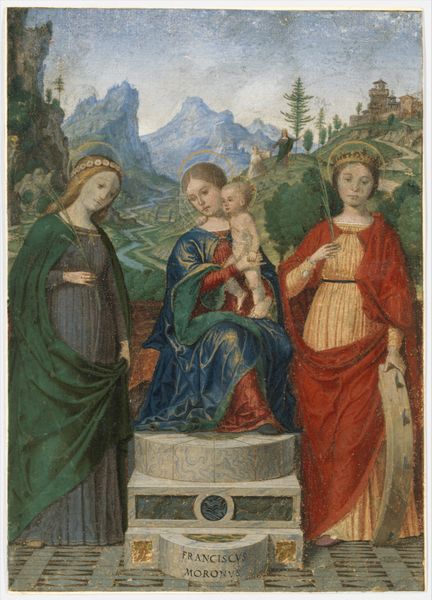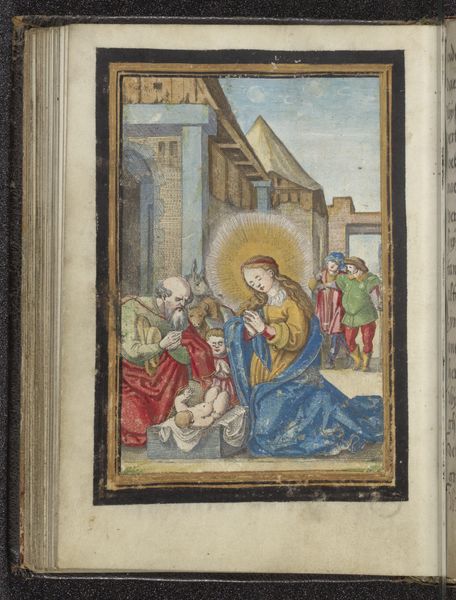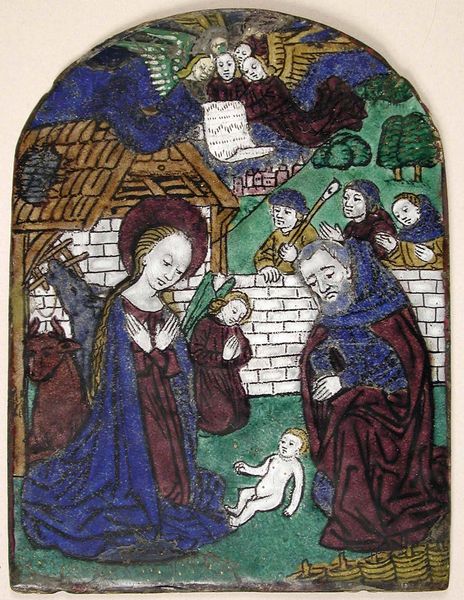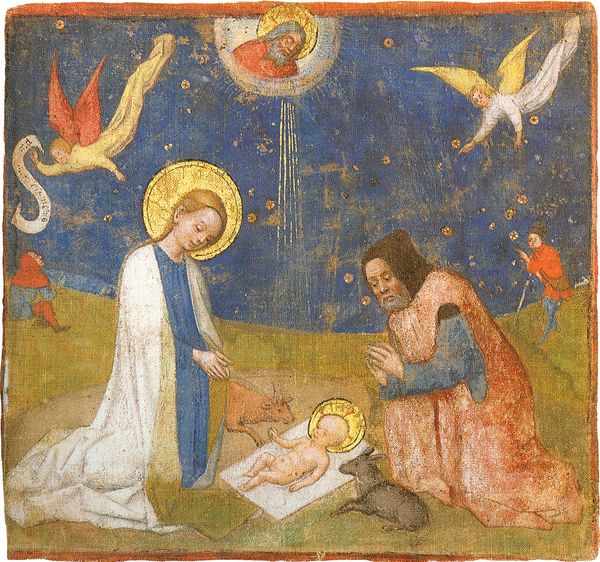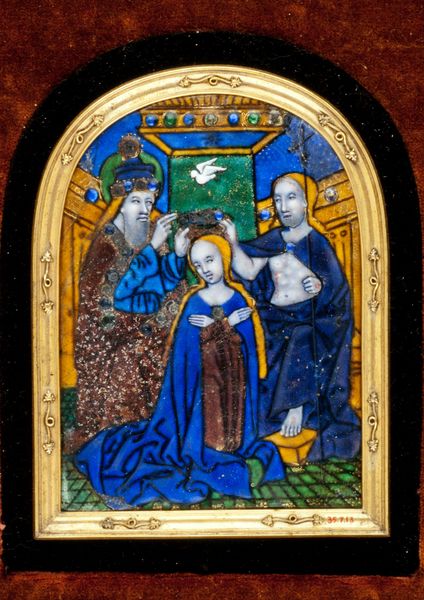
drawing, tempera, painting, watercolor
#
drawing
#
narrative-art
#
tempera
#
painting
#
figuration
#
watercolor
#
history-painting
#
italian-renaissance
#
early-renaissance
#
miniature
#
watercolor
Dimensions: 175 mm (height) x 115 mm (width) (bladmaal)
Curator: This watercolor and tempera work is entitled "The Birth of the Virgin in an Initial H." Dating back to between 1475 and 1500, this anonymous piece resides here at the SMK, Statens Museum for Kunst. Editor: It’s a vibrant and intimate portrayal. The composition, constrained within the letter 'H,' feels almost like a stage set, doesn't it? The material looks richly layered, and although I recognize it as a two-dimensional piece, the textures convey volume and substance. Curator: Indeed. We see early Renaissance techniques here, combined with a devotional miniature quality that suggests a society steeped in religious belief and ritual. The artist makes a statement on the roles that women fulfilled in both family dynamics and sacred spaces, where they are wives and mothers, but also where they sustain lineage and life. Editor: Consider, too, how the artist approached their medium. Tempera and watercolor: the grounding of pigments, the application onto treated parchment, perhaps. What was the environment like, what guilds, what workshops produced work like this and how would labor and production have factored into the iconography of such pieces at the time? Curator: Absolutely, that's crucial. Furthermore, there’s something incredibly striking about this piece regarding intersectionality and representations of motherhood, divinity, and femininity through a politicized lens. Here is the presentation of holy birth—a universal concept rendered in specifically gendered terms—which carries profound symbolic weight. It makes a statement about lineage, piety, and, inherently, female identity. Editor: Exactly. Looking closely, it's fascinating to examine how such devotional imagery used available resources to portray the most venerated. The materiality tells tales about the commerce of pigments, artisanal expertise, and economic systems that underpinned the culture of crafting faith, one delicate brushstroke at a time. Curator: Thinking about how it might have been used in its time also brings another dimension, it also serves to question broader historical narratives about power, spirituality, and representation. It provides a platform for interrogating these structures critically through its existence. Editor: In conclusion, the use of humble material tells us how a painter has elevated what's immediate and accessible. Looking closer to process invites us to challenge how history views objects and cultures and the hierarchies upon which taste is formed. Curator: Precisely. The birth narrative continues to challenge and engage across the centuries and across different cultural and class positions.
Comments
No comments
Be the first to comment and join the conversation on the ultimate creative platform.


